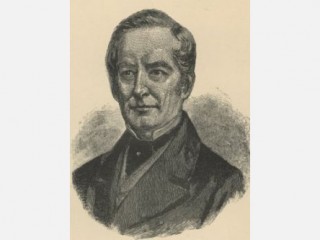
Charles Sturt biography
Date of birth : 1795-04-28
Date of death : 1869-06-06
Birthplace : Harrow, England
Nationality : British
Category : Historian personalities
Last modified : 2011-02-02
Credited as : Officer and explorer, expeditions to Australia,
Charles Sturt, British officer, explorer, and colonial public servant, led three major expeditions into the interior of eastern Australia.
Charles Sturt, the eldest son of an East India Company judge, was born in India on April 28, 1795, educated at Harrow, and became an ensign in 1813. After serving in the Peninsular War and the American War of 1812, he performed garrison duties in France and Ireland before acting as an escort in 1826 for convicts being transported to New South Wales.
The discovery of inland rivers west of the Great Dividing Range in New South Wales had excited speculation about the existence of an inland sea which Capt. Sturt, now military secretary to Governor Sir Ralph Darling, was determined to find. In 1828, under conditions of considerable hardship, he led an expedition which discovered the Darling River, 500 miles inland, and he unraveled the main features of the northern river system in New South Wales.
Sturt led a second expedition, in November 1829, to track the source of the Lachlan and Murrumbidgee rivers. In an epic return journey of some 2, 000 miles in 7 months, much of it in a 27-foot whaleboat, Sturt reached Lake Alexandrina at Encounter Bay on the southern coast, having outlined the huge internal river system which drains a vast area west of the Great Dividing Range and having found extensive pastures suitable for pastoral farming.
His health impaired and sight failing, Sturt went on leave to England in 1830 and published Two Expeditions into the Interior of South Australia (1833). After resigning from the army, he married and returned to New South Wales as a settler with a 5, 000-acre land grant from the Colonial Office. Financial difficulties led him to become surveyor general in the new colony of South Australia in 1839. But his income and status as a public servant waned to such an extent that in order to restore his fortunes he sought permission from the Colonial Office to find an inland sea in the center of the continent.
Sturt's third expedition, which left Adelaide in August 1844, lasted for 17 months. Trapped by drought, the party was marooned in temperatures above 100 degrees from January to July 1845 at an isolated water hole 400 miles inland. Subsequently Sturt made a 450-mile journey toward the center but failed to reach the Tropic of Capricorn or to cross the Simpson Desert. When he returned to Adelaide, almost blind and broken in health, Sturt had abandoned his belief in the existence of a great inland sea. Like so many early explorers, he was disappointed by the hot, dry interior, which offered no prospects for farmers. But much of the area he crossed subsequently became a paradise for mineral prospectors.
On his return Sturt became colonial treasurer, received the Royal Geographical Society's Gold Medal, and published Narrative of an Expedition into Central Australia (1849). In 1853 he retired to Cheltenham in England, where he died on June 16, 1869.
















